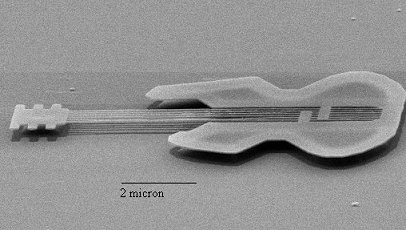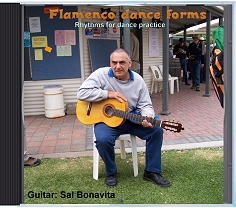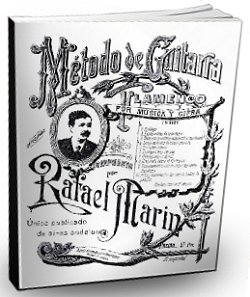What type of guitar is best for a beginner who wants to learn flamenco. Although classical guitars look basically the same, there are differences which should be taken into account when choosing a suitable guitar for learning flamenco.
Do you need a special type of guitar?
The simple answer is No! For a beginner, any (nylon stringed) classical guitar will do the job.
Having said that, there are 2 points of confusion that are worth mentioning. They may seem obvious to most people, but I'm here to tell you they are not obvious to everyone.
1) Any guitar with steel strings on it is NOT suitable. There was a time when certain styles of Country and Western and jazz guitars were advertised as "Spanish guitars" for some unknown reason. (I think because they have roughly the same shape as a classical / flamenco guitar). If you look hard enough you may even find a few books of the 1920's , 30's, and 40's which have plectrum style music for these "Spanish guitars". The equation seems to be: Flamenco = Spanish music = let's play it on my grandpa's Spanish guitar. Now where did he put those plectrums? Or something like that.
2) Another common misconception is that the bass strings on a classical guitar are steel. On the outside they look the same as their steel brothers but that's where the similarity ends. Classical guitar bass strings have many fine strands of nylon woven together inside the copper winding. If you look closely you will see these strands poking out of the end of the string.
Things to consider
1) The action needs to fairly low without producing excessive string buzz.
2) A solid wood top produces a better tone than a factory laminated wood guitar.
3) A tapping plate (golpador) needs to be attached on the top of the guitar. Genuine flamenco instruments already have these but any decent guitar repair shop or Luthier can stick one on for you. Right hand tapping techniques can certainly damage the guitar if this protection is not there.
4) Flamenco guitars are generally lighter in construction. I personally don't like heavy guitars. For me a guitar must feel comfortable and "user friendly". Heavy wood guitars like some classical guitars don't do it for me.
5) When I was learning I bought cheap guitars only. Mainly because I could not afford to pay $500 or more for a expensive hand made guitar by a respected luthier. That doesn't mean a second hand non-flamenco factory made guitar is no good. For example, I think Yamaha makes good beginner classical guitars that are more than suitable for learning flamenco with an attached golpe plate. I was pretty rough on my guitars so I never got precious about an instrument. When my guitar needed replacing, I just visited the local second hand guitar shop and spend an hour trying out different classical style guitars. A guitar does not have to be expensive; it just needs to "speak to me". What I mean is that it needs to feel comfortable and have a strong tone.
6) One consideration that I think is important is whether the strings maintain good tone even if they are fairly worn. This has more to do with the guitar than the strings themselves. That's why trying old guitars in a second hand shop is a good idea if you just want a cheap beginners instrument. I would try those with worn strings first. The problem is that many guitars sound all terrific and sparkly with band new shiny strings but quickly lose their tone after a few days.
Useless information department
The world's smallest guitar is the nano guitar, created in 1997 by a professor at Cornell University to demonstrate new technologies that could be used in electronics and fiber optics. The nano guitar is 10 micrometers long (about the length of a human cell), and has 6 strings that are 50 nanometers (one-billionth of a meter) wide. If plucked, the guitar makes a sound which would be audible if you were a nano human 15 microns tall. Normal humans however, can't hear a damn thing.







